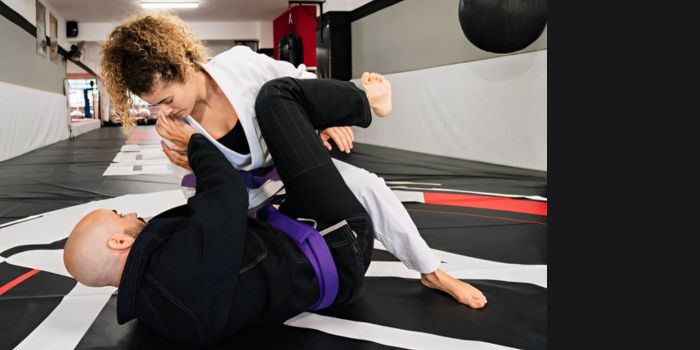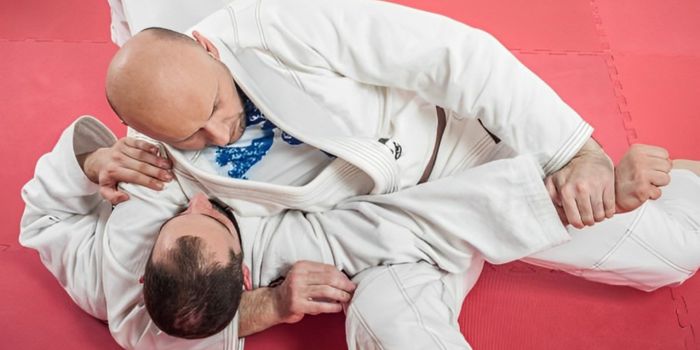The Brabo choke is a highly effective Brazilian Jiu-Jitsu (BJJ) submission technique that has gained popularity in the grappling community. This choke, also known as the D’Arce choke in no-gi grappling, was developed by Leonardo Vieira, a renowned BJJ competitor. It involves trapping the opponent’s arm with the attacker’s chest while applying pressure to cut off blood circulation to the brain, leading to a loss of consciousness. The technique has evolved over time and is now utilized in various positions, including side control, half guard, and closed guard.
The History of the Gi Brabo Choke
This technique was pioneered by Leonardo Vieira in the early 2000s. Vieira, the founder of Checkmat Academy, observed one of his white belt students instinctively use a similar position and began developing it further. This technique became a significant success for Vieira, who showcased its effectiveness in tournaments like the 2004 World Cup and Pan American Championship. The term “Brabo” in Portuguese translates to qualities like angry, tough, or aggressive, reflecting the nature of this powerful submission.
The Brabo Choke Name
The name “Brabo BJJ Choke” originated from Leonardo Vieira’s email handle “leobrabo,” which was given to him by his friend Kit Pelligro. This unique name adds a personal touch to the technique and has become synonymous with this specific type of choke in BJJ circles.

Renowned Grapplers Recognized for Their Mastery of the Brabo Choke:
- Leonardo Vieira: The creator of this technique and a highly successful BJJ competitor.
- Rafael Mendes: Known for his exceptional use of the BJJ choke in competitions.
- Guilherme Mendes: A skilled grappler who has incorporated the Brabo BJJ choke into his arsenal.
- Andre Galvao: Renowned for his mastery of various grappling techniques, including the Brabo jiu jitsu choke.
- Otavio Sousa: A proficient BJJ practitioner recognized for his application of the Brabo submission.
- Lucas Lepri: A top-tier grappler who has demonstrated proficiency in executing this technique..
- Mario Reis: Known for his technical expertise in BJJ and utilization of the Brabo BJJ choke.
- Rodolfo Vieira: A dominant force in BJJ competitions who has showcased the effectiveness of the Brabo submission.
Different Techniques
Brabo Choke from Side Control:
Credit: Chewjitsu
This is a powerful submission technique in Brazilian Jiu-Jitsu that offers grapplers a strategic advantage when in a dominant position. This technique involves trapping the opponent’s arm with precise control while applying pressure to the neck to cut off blood circulation and force a tap out.
From the side control position, the attacker secures a strong grip on the opponent’s lapel, allowing them to control the distance and angle needed to execute the choke effectively. By leveraging their body positioning and weight distribution, the practitioner can create a tight squeeze around the opponent’s neck, restricting blood flow and inducing discomfort.
Executing the Brabo BJJ Choke from Side Control requires finesse and timing, as it involves transitioning smoothly from controlling the opponent’s upper body to securing the chokehold. By maintaining a stable base and applying gradual pressure, the attacker can gradually tighten the choke, forcing their opponent into a vulnerable position. This technique showcases the importance of grip strength, body mechanics, and positional awareness in BJJ submissions.
Overall, mastering the Brabo submission from Side Control not only demonstrates technical proficiency but also highlights the strategic mindset required in high-level grappling. It is a versatile technique that can catch opponents off guard and secure victories in both training and competition scenarios.
Brabo Choke from Half Guard :
Credit: Atos BJJ Atlanta, GA
This is a potent submission technique in Brazilian Jiu-Jitsu that offers practitioners a strategic advantage when transitioning from the top position. This choke is particularly effective when the practitioner is in the process of passing the opponent’s guard. By controlling the opponent’s neck, the attacker not only prevents counterattacks but also sets up opportunities for their offensive maneuvers.
To execute the Brabo submission from Half Guard, the practitioner starts from the top half guard position and aims to initiate a knee cut guard pass. If the pass is not immediately successful, indicating the opponent’s defensive posture with a shin shield and underhook, this scenario can be leveraged to set up the Brabo BJJ Choke.
The key lies in controlling the end of the opponent’s lapel, ensuring a firm grip to feed the lapel under the opponent’s neck. By overhooking the opponent’s underhook and securing a deep grip under the neck, the practitioner can position themselves for a successful choke. The final mechanics involve turning the shoulders, ensuring the opponent’s arm is across their chest, and applying pressure to secure the choke, sometimes even with just one hand.
3. One-Handed Brabo BJJ Choke:
Credit: BJJ Video Vault
This is a specialized and advanced submission technique in Brazilian Jiu-Jitsu that showcases the practitioner’s skill and precision. This technique involves executing the choke with only one hand, demonstrating exceptional control and dexterity. By utilizing a strong grip and strategic positioning, the practitioner can effectively apply pressure to the opponent’s neck, cutting off blood circulation and forcing a tap out. The one-handed variation of the Brabo submission requires a deep understanding of leverage, body mechanics, and timing to secure the submission successfully.
This technique highlights the versatility and adaptability of the Brabo BJJ submission, showcasing how practitioners can modify and refine traditional submissions to suit their individual style and preferences. Mastering the one-handed Brabo Jiu Jitsu Choke not only demonstrates technical proficiency but also reflects the creativity and innovation that are integral to high-level grappling in Brazilian Jiu-Jitsu competitions.

Frequently Asked Questions (FAQ's)
Q1. What is a Brabo Choke?
Ans: It’s also known as the D’Arce choke, is a submission technique in Brazilian Jiu-Jitsu where the attacker traps the opponent’s arm with their chest while applying pressure to the neck to cut off blood circulation and force a tap out. It was created by Leonardo Vieira and has become a popular and effective chokehold in BJJ.
Q2. What is the difference between D'Arce and Anaconda chokes?
Ans: The D’Arce choke and Anaconda choke are similar techniques, both being variations of the arm triangle choke. The main difference lies in the positioning of the choking arm: in the D’Arce choke, the choking arm is threaded under the near arm, in front of the opponent’s neck, and on top of the far arm. On the other hand, in the Anaconda choke, the performer threads their arm under the opponent’s neck and through the armpit, grasping the biceps of the opposing arm.
Q3. What is the Darce choke position?
Ans: The Darce choke position involves trapping an opponent’s head and arm with one of your arms while applying pressure to their neck with your other arm. This technique is a type of head and arm choke that can be executed from various positions in Brazilian Jiu-Jitsu.
Q4. Is Triangle a blood choke?
Ans: Yes, the Triangle Choke is a blood chokehold in Brazilian Jiu-Jitsu. It involves using one’s legs to create a triangle around an opponent’s neck and one of their arms, cutting off blood flow to the brain and leading to unconsciousness if applied correctly.
Q5: What is The story of the Brabo Choke?
Ans: It was created by Leonardo Vieira, a highly accomplished BJJ competitor. Legend has it that Vieira developed this technique after observing one of his white belt students instinctively use a similar position. He refined this technique over time and showcased its effectiveness in tournaments like the 2004 Pan American Championship and World Cup. The name “Brabo” derives from Vieira’s email handle “leobrabo,” given to him by his friend Kit Pelligro, reflecting qualities like aggression and toughness associated with this powerful submission hold.


